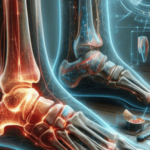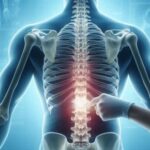Dental care has come a long way over the years. From simple tooth extractions to advanced digital imaging, modern dentistry offers a wealth of options for maintaining oral health. Mark Sutton DDS has seen these changes firsthand. As a general dentist, I’ve witnessed the transformation of tools and techniques that improve patient care. It’s amazing how technology has reshaped the dental landscape, making treatments quicker and less invasive. Let’s explore some of these innovations that have revolutionized the way we care for our teeth.
The Shift from Analog to Digital
One of the most significant advancements is the move from analog methods to digital solutions. This shift has made dental care more efficient and accurate. Digital X-rays, for example, produce images with greater clarity and less radiation exposure. They allow for better diagnosis and treatment planning. Similarly, digital impressions have replaced traditional molds. They offer more comfort for patients and higher precision for dental procedures.
Laser Dentistry: Precise and Pain-Free
Laser technology has also made a mark in dentistry. Lasers can treat a variety of dental issues, from cavities to gum disease. They reduce the need for drills and stitches, making procedures less painful and recovery faster. Lasers also minimize bleeding and swelling, offering a more comfortable experience. According to the National Institute of Dental and Craniofacial Research, laser dentistry is becoming more common due to its many benefits.
3D Printing and Its Role in Dentistry
3D printing is another groundbreaking technology. It allows for the creation of dental crowns, bridges, and even dentures with high precision. This technology speeds up the production process and improves the fit and comfort of dental prosthetics. Here is a simple comparison of traditional and 3D printed dental devices:
| Aspect | Traditional Dental Devices | 3D Printed Dental Devices |
| Production Time | Weeks | Days |
| Precision | Varies | High |
| Customization | Limited | Extensive |
The Rise of Teledentistry
Teledentistry has emerged as a valuable tool, especially during the pandemic. It allows dentists to consult with patients remotely, providing guidance and advice without the need for an in-person visit. This technology is convenient for routine check-ups and follow-ups, saving time for both patients and dentists. The Centers for Disease Control and Prevention recognize teledentistry as an effective way to expand access to dental care.
Conclusion
The evolution of dental technologies has changed how we approach oral health. From digital tools to laser treatments and beyond, each advancement offers new possibilities for care. These innovations make dental procedures more efficient, less invasive, and more comfortable. As technology continues to evolve, we can expect even more improvements that will benefit both dentists and patients alike.


